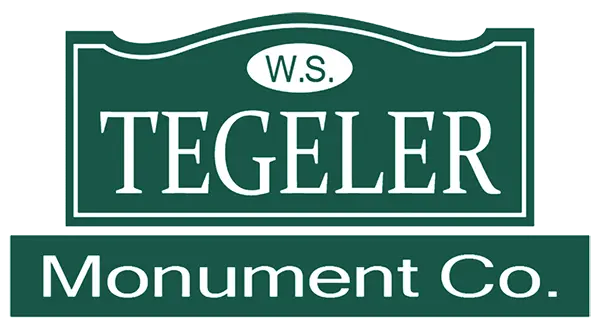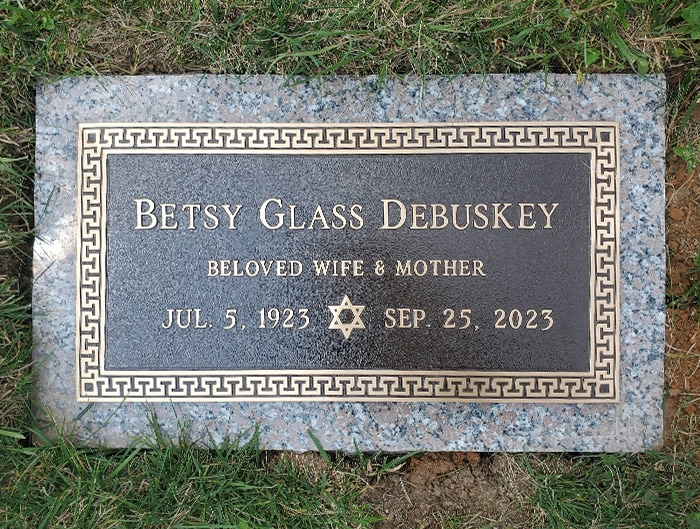For centuries, epitaphs have been a way for families to express love, honor, and remembrance on headstones and monuments. From poetic verses to simple expressions of faith, these inscriptions are often the most personal part of a memorial. Today, modern epitaphs reflect not only timeless traditions but also evolving cultural values, changing family dynamics, and new design trends.
The Evolution of Epitaphs Through History
Epitaphs have always been a mirror of their time. Ancient Romans often included professions, virtues, or achievements. In the 19th century, poetic verses and religious scripture dominated headstones in American cemeteries. By the mid-20th century, many families preferred concise inscriptions such as “Beloved Mother” or “In Loving Memory.”
Today, epitaphs are more diverse than ever, ranging from traditional Bible verses to contemporary expressions that highlight individuality, humor, or even hobbies. This shift underscores our culture’s emphasis on personalization and storytelling.
Trend #1: Short and Simple Messages
Modern epitaphs are often brief, designed to convey love or identity in just a few words. Examples include:
- “Forever Loved”
- “Gone Too Soon”
- “Beloved Father, Husband, Friend”
- “In Loving Memory”
- “Rest in Peace”
- “Always in Our Hearts”
- “Until We Meet Again”
- “Faithful and True”
- “Cherished Mother”
- “Love Never Ends”
- “At Rest”
- “Remembered Always”
- “Deeply Missed”
This trend reflects a desire for clarity and timelessness. Families often want something easy to read, even decades later, while still leaving a profound emotional impact.
Trend #2: Personalized Inscriptions
Increasingly, epitaphs highlight the unique personality of the deceased. Instead of generic phrases, families are choosing words that capture quirks, values, or passions. Some examples include:
- “Avid Gardener and Loving Mother”
- “He Made Everyone Laugh”
- “Her Voice Was Her Gift”
- “Devoted Teacher and Mentor”
- “Loved the Ocean, Cherished Family”
- “Builder of Dreams, Maker of Memories”
- “Forever on the Dance Floor”
Personalized epitaphs speak directly to who the individual was, making a monument feel less like a marker and more like a story.
Trend #3: Faith and Spirituality
Religious inscriptions remain a strong tradition, especially in Maryland, D.C., Virginia, and Pennsylvania where faith communities play a central role in many families’ lives. Common phrases include:
- “Safe in the Arms of Jesus”
- “The Lord Is My Shepherd”
- “Resting With the Angels”
- “Thy Will Be Done”
- “Forever With the Lord”
- “Peace Be With You”
- “In God’s Care”
- “Until We Meet Again in Heaven”
However, spirituality today is often expressed more broadly. Families may choose words like “At Peace” or “In Eternal Light” to convey comfort without explicitly religious language.
Trend #4: Quotes, Poems, and Song Lyrics
Another rising trend is using a favorite passage, line of poetry, or song lyric. This approach connects the inscription to a personal or cultural touchstone. Some families select lines from Walt Whitman, Maya Angelou, or even classic rock songs.
Examples:
- “Do Not Go Gentle Into That Good Night” – Dylan Thomas
- “All You Need Is Love” – The Beatles
- “I Sing Because I’m Happy” – Hymn lyric
- “Because I Could Not Stop for Death, He Kindly Stopped for Me” – Emily Dickinson
- “How Sweet the Sound” – Amazing Grace
- “The Song Is Ended, But the Melody Lingers On” – Irving Berlin
- “I Did It My Way” – Frank Sinatra
- “Forever Young” – Bob Dylan
- “And Flights of Angels Sing Thee to Thy Rest” – Shakespeare, Hamlet
- “Somewhere Over the Rainbow” – Harold Arlen & Yip Harburg
- “The Best Is Yet to Come” – Cy Coleman & Carolyn Leigh
- “When Peace Like a River Attendeth My Way” – It Is Well With My Soul
This choice shows how modern epitaphs can reflect both tradition and individuality.
Trend #5: Humor and Lightheartedness
In some cases, families choose epitaphs that capture a loved one’s sense of humor. While less common, witty inscriptions have gained attention in recent years. They reflect a cultural shift toward celebrating life with joy rather than focusing solely on grief.
Examples include:
- “I Told You I Was Sick”
- “Gone Fishing”
- “Still Watching Over the Orioles”
Humorous epitaphs can be especially healing for families who want the monument to capture laughter as much as love.
Trend #6: Multilingual Inscriptions
In diverse communities across Maryland, Virginia, D.C., and Pennsylvania, epitaphs often include multiple languages. Families may honor their heritage with inscriptions in Spanish, Greek, Korean, or any other languages alongside English.
This approach reflects the importance of cultural roots while also ensuring that future generations can connect with their ancestry.
Trend #7: Symbolic Imagery and Pairing with Words
While an epitaph is primarily text, many families now combine inscriptions with etched imagery. For example:
- A cross with the words “Faithful Servant”
- A book with “Her Story Lives On”
- A musical note with a line from a favorite song
- A heart with “Forever in Our Hearts”
- An angel with “Carried Safely Home”
- A tree with “Rooted in Love”
- A pair of wedding rings with “Together Forever”
- A lighthouse with “Guiding Light”
- A rose with “Forever Beautiful”
- Military insignia with “Proudly Served”
- A mountain scene with “Everlasting Peace”
- A dove with “Rest in Heavenly Peace”
The pairing of words and visuals strengthens the message and makes the monument more distinctive.
Trend #8: Family-Centered Inscriptions
Instead of focusing solely on the individual, some epitaphs highlight relationships. This is especially common on shared monuments or companion headstones. Examples include:
- “Together Forever”
- “Married 52 Years”
- “Parents, Grandparents, and Friends”
This trend reflects the way modern epitaphs often celebrate family bonds and collective legacy.
What These Trends Say About Us
Epitaphs may be only a few words, but they speak volumes about how we see ourselves as individuals and as a society. Today’s epitaphs reveal:
- A desire for personalization – Families want words that capture unique identities.
- An emphasis on connection – Many epitaphs focus on relationships, community, and shared experiences.
- A balance of tradition and modernity – Religious scripture remains common, but contemporary references like song lyrics or humor are also widely accepted.
- Cultural diversity – Multilingual inscriptions show how communities embrace heritage alongside assimilation.
Ultimately, epitaphs show that we value remembrance not only as grief, but as storytelling and celebration.
How to Choose the Right Epitaph
Selecting an inscription can feel overwhelming. Families often balance multiple factors:
- Length: Will the words fit the chosen headstone design?
- Tone: Should it be solemn, spiritual, personal, or lighthearted?
- Legacy: Will it reflect the values and personality of your loved one?
- Family agreement: Do all decision-makers feel comfortable with the choice?
- Cemetery regulations: Does the chosen cemetery allow the length, symbols, or language you want to include?
- Readability: Will the inscription remain clear and easy to read over decades of weathering?
- Timelessness: Will the words still resonate with future generations who visit the monument?
- Budget considerations: Does the inscription length or complexity fit within engraving and design costs?
At Tegeler Monument Company, we recommend starting with a brainstorming session. Write down meaningful phrases, memories, or favorite sayings. From there, we can help you refine the inscription to ensure it’s both meaningful and well-suited to the monument style.
The Role of Technology in Modern Epitaphs
New engraving methods allow for greater flexibility in inscriptions. Laser etching, for example, enables highly detailed fonts and images. Families can now include longer inscriptions, intricate designs, or even digital scannable codes that link to online memorials.
This reflects another trend: the blending of physical and digital remembrance. While the headstone remains the physical marker, families increasingly use technology to expand storytelling.
Local Considerations in Maryland, D.C., Virginia, and Pennsylvania
Every cemetery has its own rules about epitaph length, font size, and symbols. Some locations in Maryland or Pennsylvania may allow longer inscriptions, while others restrict certain imagery. Working with a local company like Tegeler ensures that families avoid surprises during the approval process.
Our familiarity with regional cemeteries across Maryland, Washington, D.C., Virginia, and Pennsylvania allows us to guide families through requirements while still achieving a meaningful, personalized inscription.
Conclusion: Epitaphs as a Reflection of Life
Epitaphs are more than words on stone; they are lasting tributes that capture love, culture, and identity. Today’s trends show how families balance tradition with individuality, faith with humor, and heritage with modern expression.
At Tegeler Monument Company, we’re honored to help families in Maryland, D.C., Pennsylvania, and Virginia create inscriptions that stand the test of time. Whether you prefer a classic Bible verse, a heartfelt message, or a line that captures your loved one’s unique story, we’ll ensure your monument reflects what mattered most.
Contact Tegeler Monument Company
If you are planning a headstone or monument and need guidance choosing the right epitaph, Tegeler Monument Company is here to help.
Our compassionate team will walk you through every step, from inscription design to monument installation. Our goal is to ensure your loved one’s memory is honored with dignity and care. Contact us to learn more.


Comments are closed